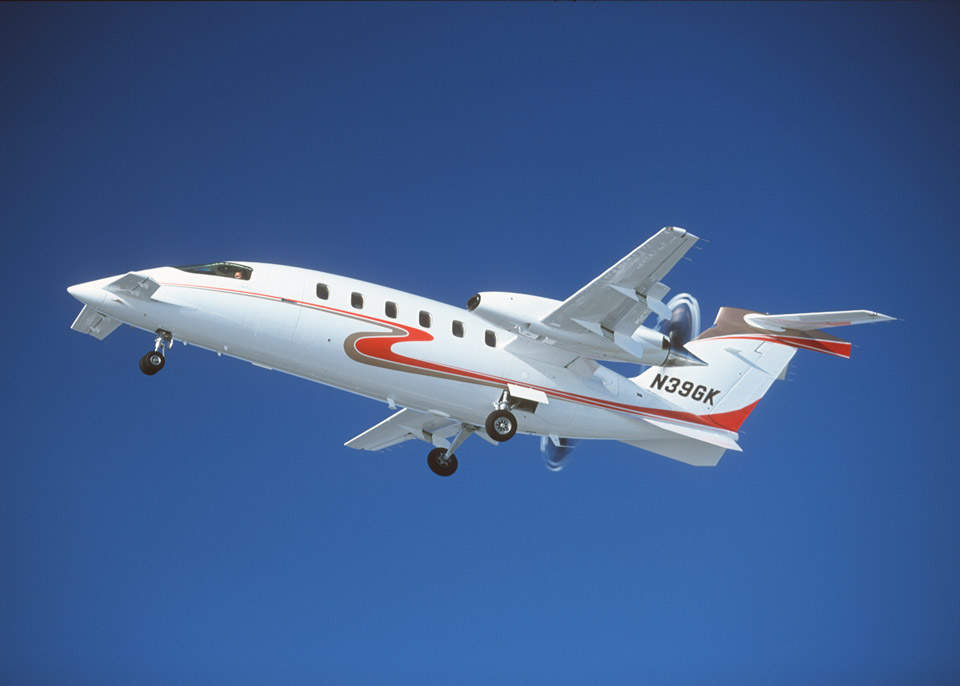
The P180 Avanti is a very fast (400-knot) and fuel-efficient twin turboprop that was developed by Italy’s Piaggio in response to the high oil prices of the 1970s. The distinctive nine-passenger airplane features a large cabin and three lifting surfaces—a main wing, T tail, and a foreplane located near the nose of the aircraft.
The original Avanti was powered by two 850-shaft- horsepower Pratt & Whitney PT6A-66A engines mounted on the wing in a pusher-prop configuration. The initial model P180 had a metal fuselage but a composite nose cone, tail cone, engine nacelles, wing moving surfaces, and landing-gear doors. Certified for single-pilot operations, the airplane included Rockwell Collins avionics, Hartzell five-blade props, a galley, and a fully enclosed toilet.
The P180 was launched in 1982, and Learjet became a partner the following year, but withdrew for financial reasons in 1986. A prototype initially flew in September 1986, but it took nearly four years for a production model to take to the skies. Italian and FAA Part 23 certification finally was achieved in October 1990.
An increased gross weight version of the Avanti was developed in 1991, and earlier aircraft were retrofitted so they could operate at the higher weights, which improved payload and range. Subsequently, fuel capacity was increased and the fin, rudder, and foreplane were constructed of aluminum, instead of composite material, to reduce production costs and enable higher speeds.
Although a variety of Italian operators bought P180s, Piaggio’s financial challenges cast a shadow over the Avanti program during the late 1990s, and the pusher prop remained a niche-market aircraft with only a handful of P180s in service in the United States. Just 105 original P180 aircraft were built between 1990 and 2005.
However, Piaggio America was formed in 2000 to support the aircraft and reintroduce it to the U.S. market. In addition, the establishment in 2002 of Avantair, a Florida-based fractional aircraft ownership program that would eventually operate a fleet of more than 50 Avantis, boosted the airplane’s acceptance in the United States.
The introduction of the improved Avanti II, which features Rockwell Collins Pro Line 21 avionics, also has helped. The improved model won EASA certification in 2005 and FAA approval in 2006.
By 2007, aviation authorities approved installation of improved PT6A-66B engines, which provide approximately 10 percent more power in cruise and climb, and enable the aircraft to fly at more than 400 knots. The engine upgrade was made available to existing operators through a service bulletin.
The Avanti fleet now is more than 200 aircraft strong. Current Vref prices for the aircraft range from $1.75 million for a 1990 model, to $6.8 million for a 2012 model.
Robert A. Searles is a writer and editor specializing in aviation.
SPEC SHEET
Avanti II
Engines | Two Pratt & Whitney PT6A-66Bs flat-rated to 750 shaft horsepower each
Seats | up to 11 (including two pilots)
Max takeoff weight | 12,100 lbs
Max cruise speed | 402 kts
Takeoff distance | 3,262 ft
Range | 1,470 nm
Wingspan | 46 ft, 1 in
Length | 47 ft, 3 in
Height | 13 ft, 1 in


